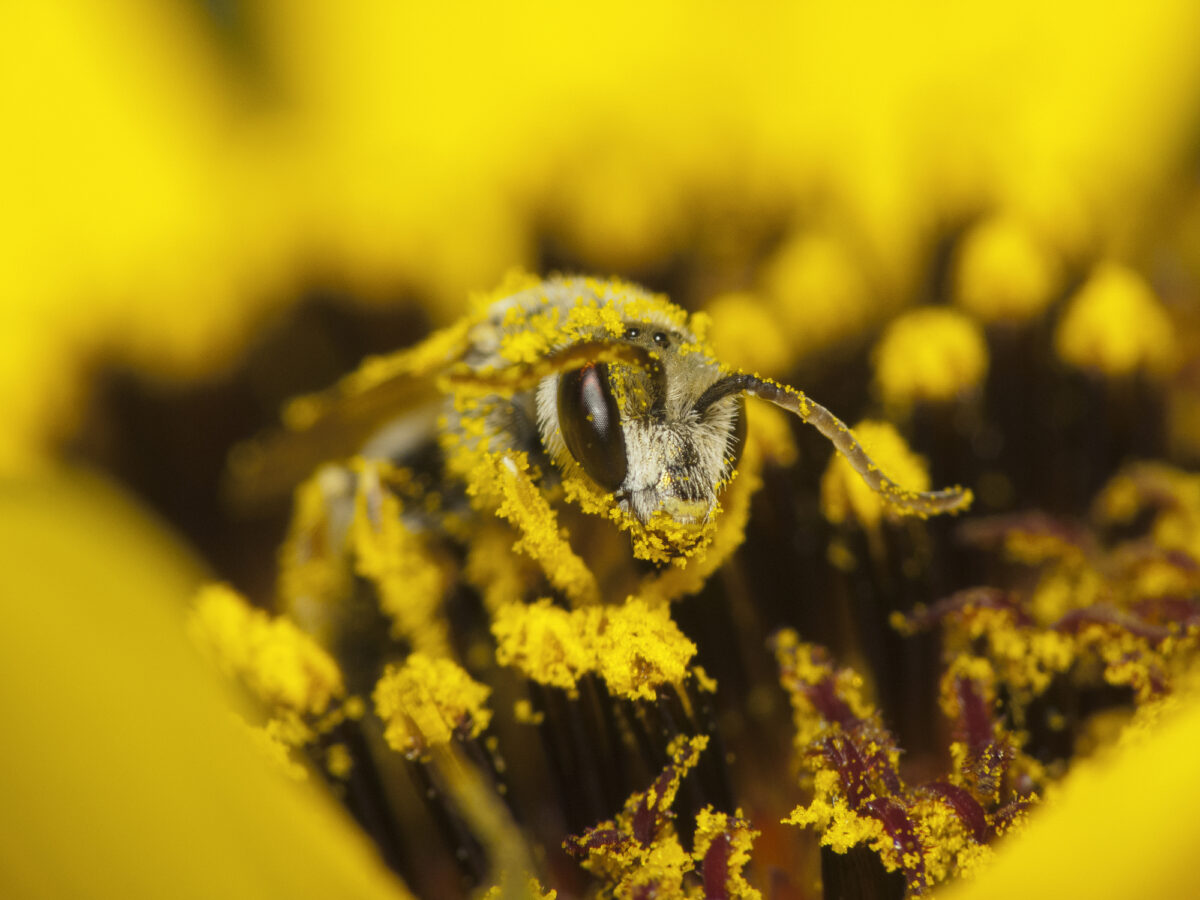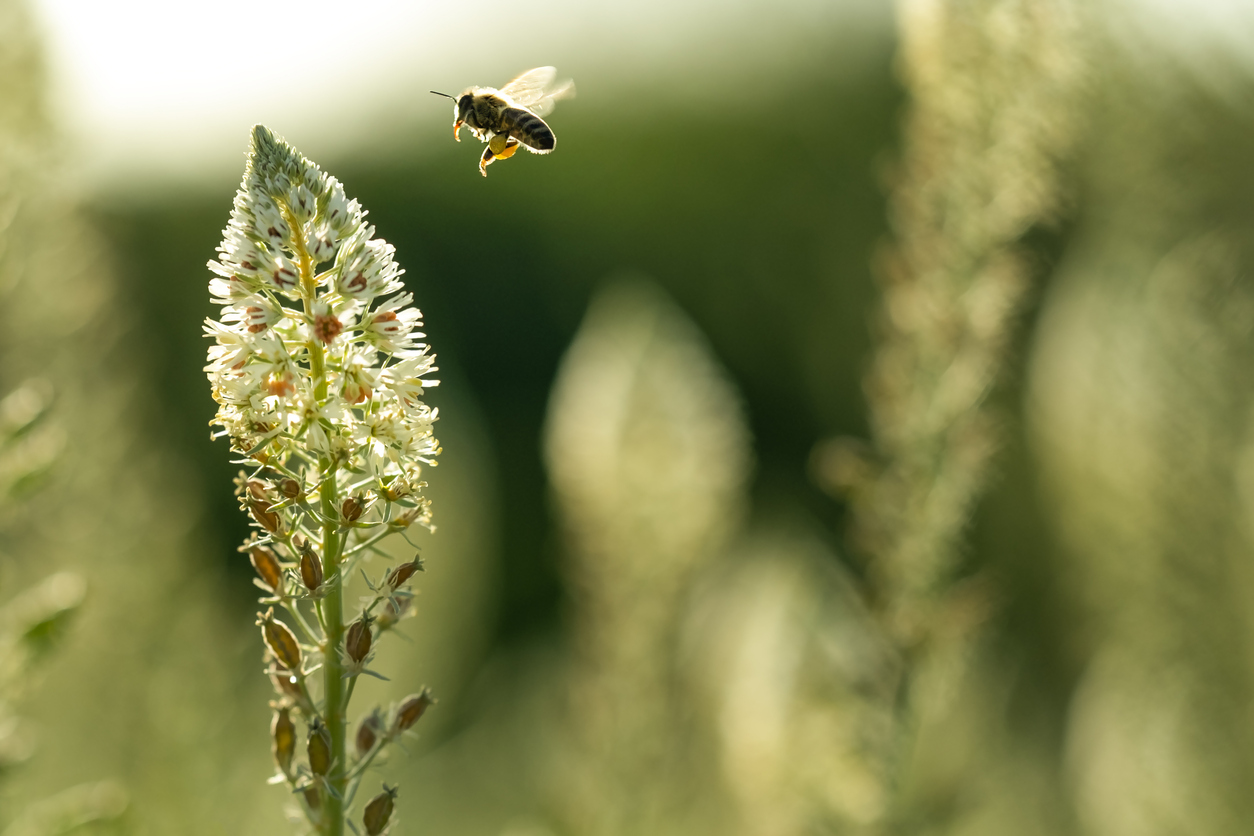We may earn revenue from the products available on this page and participate in affiliate programs. Learn More ›
Q: I recently moved and am ready to start focusing on my garden. A friend told me that I should plant flowers that attract bees, but I’m not sure I want these insects around my home. Why are bees important, and why should I attract them to my yard?
A: Your friend is right—bees are very important. While there are actually several types of bees, honey bees are the most valued pollinator, responsible for pollinating about 80 percent of all flowering plants. Without bee pollination, our supply of fruits, vegetables, and other crops would be in serious trouble.
According to the United States Department of Agriculture (USDA), honey bees pollinate more than 130 different types of fruits, vegetables, and nuts, and they play a major roll in the production of about $15 billion worth of crops every year in the U.S. alone. Keep reading to learn more about the many ways bees benefit people and the environment we live in.
RELATED: 3 Container Garden Combos for Attracting Pollinators

Bees pollinate crops.
Honey bee colonies work together to find food. They buzz or “dance” to alert other bees in their colony about the locations of the best flowers to visit. Once they arrive at a flower, a bee drinks nectar using its long proboscis, which works like a straw. The nectar gives the bees energy and is later turned into honey. As they travel from flower to flower collecting nectar, their bodies also pick up pollen. This pollen gets transferred between all of the flowers they visit. This process of transferring pollen, called pollination, is an important part of flowering and fruiting plant reproduction. If honey bees didn’t play this critical role in pollination, many food crops would be left unpollinated, and thereby unable to produce food.
Bees help feed livestock.
Bees also help with food production by making it possible to feed livestock. If bees weren’t able to pollinate the crops that livestock eat in order to grow, reproduce, and produce the animal products we rely on, farms would be unable to support the current livestock populations that they do now. A lack of livestock coupled with a lack of crops could potentially lead to major food security issues for people around the world, including in the U.S.
Bees make honey.
The most well-known benefit provided by bees is the honey they make, another product people use everyday. Honey is essential to bees, too, as it’s the food that bee colonies survive on when there are fewer flowers and other nutrition sources in winter. Not only do humans harvest honey for snacking, cooking, and sweetening, but birds, insects, raccoons, and other wild animals also enjoy and depend on its sweet flavor and nourishment.
Bees support biodiversity.
Put simply, without bees, our entire ecosystem would face major threats. Bees play an essential role in pollinating crops, flowers, trees, and other plants, allowing them to grow fruits, vegetables, and future generations of plants. Animals and humans alike rely on this vegetation for food, shelter, and many other needs. If there were no native pollinators to help these plants reproduce, the food supply and survivability of people and animals around the planet would be severely impacted.

Why are bee populations declining?
Despite their importance to the planet’s ecosystems, the populations of several bee species are declining. This population decrease is the result of different threats facing honey bees and other wild bee species.
Habitat loss is one of the primary reasons behind pollinator decline. With more and more human development projects wiping out woodlands, grasslands, and native wildflower meadows, there are fewer places for bees to live. And many of the natural nesting areas that remain are sprayed with toxic pesticides, which can poison the bees that stop to feed on plants and potentially cause colony collapse disorder.
Worsening and more frequent extreme weather events caused by climate change are another reason bee populations are declining. Changes in weather and climate alter when flowers bloom, which can interfere with the nesting and swarming patterns of bees.
Air pollution is another factor leading to decreased bee populations. Bees find their food by following the scent molecules that plants release. However, when there are more pollutants in the air, these scent molecules can be changed or harder to detect, impeding bees’ ability to find food. When bees are slower or less effective at finding flowers, fewer plants get pollinated.
RELATED: Why You Should Care That the Monarch Butterfly Population Is Dwindling
You can help save the bees in your own backyard.
Though you may not be able to single-handedly fix air pollution, climate change, and the other serious threats that bees face, there are things you can do at home to help protect local bee populations.
- Let clover and dandelions grow in your yard until the nectar-producing plants have finished blooming.
- Make your garden more bee-friendly by planting sunflowers, lavender, black-eyed Susans, and other flowers that attract them.
- Grow a variety of flowers that bloom at different times through the year.
- Add a water source, such as a shallow birdbath, to your backyard.
- Do not use pesticides that are toxic to bees.
- Leave honey bee swarms alone, and contact a beekeeper if relocation is necessary.
- Teach children and other family members about why bees are important.
- Purchase local honey from beekeepers in your area.


